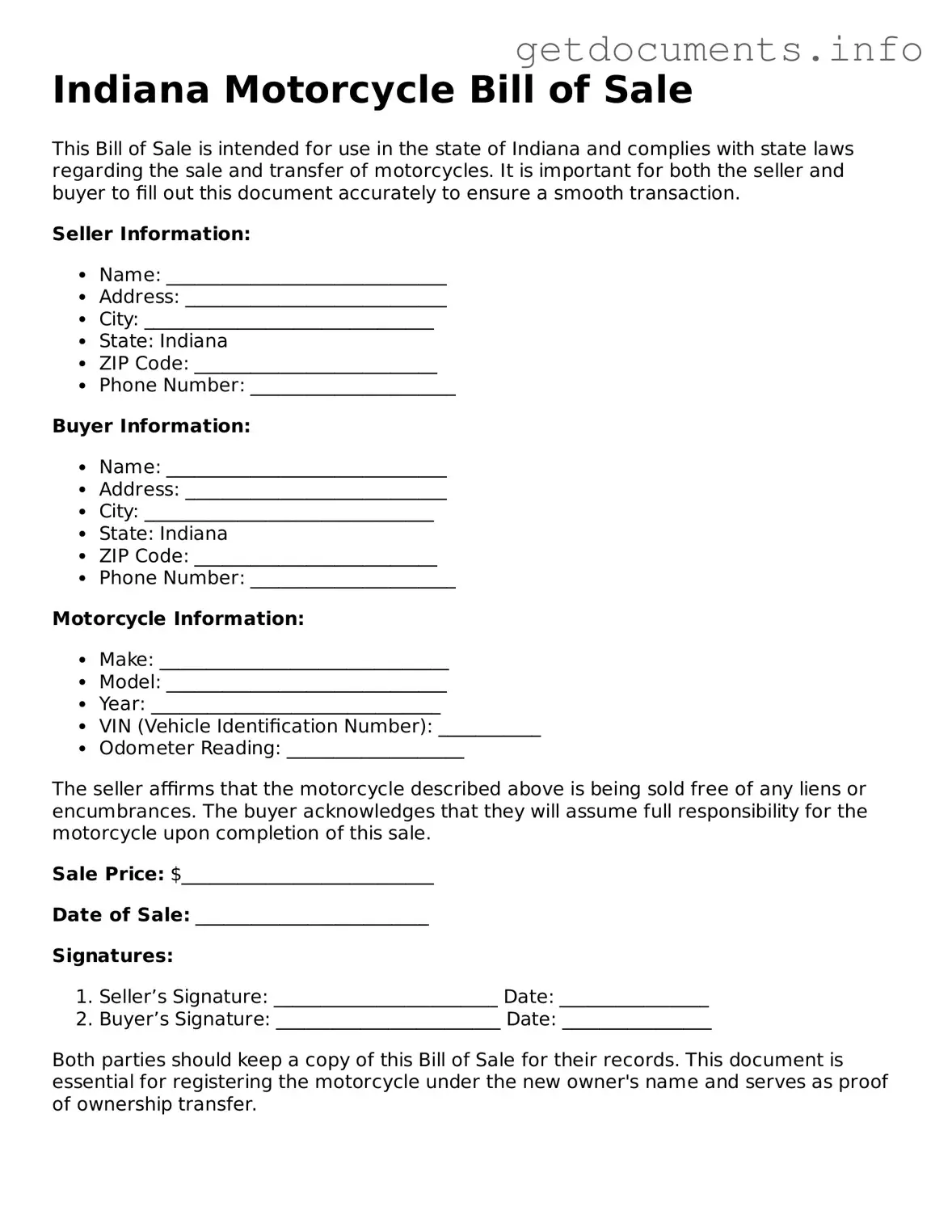Free Motorcycle Bill of Sale Template for Indiana
A Motorcycle Bill of Sale form is a legal document that records the transfer of ownership of a motorcycle from one person to another in Indiana. This form provides essential details about the motorcycle, the buyer, and the seller, ensuring a smooth transaction. To make the process easier, consider filling out the form by clicking the button below.
Access Motorcycle Bill of Sale Editor
